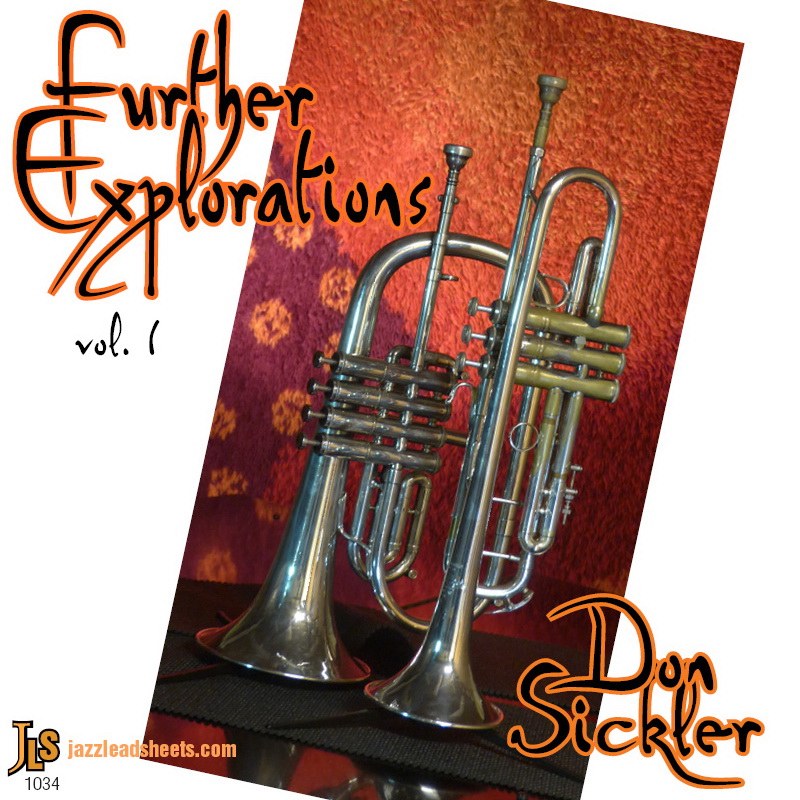For The Moment – Renee Rosnes
Simple yet subtly unusual, with a delicate rhythmic feel, For The Moment is one of Renee Rosnes' most memorable compositions. Our exclusive "Further Explorations" recording has Minus You tracks for all instruments.
- Recording: Renee Rosnes - For The Moment
- Recorded on: February 15-16, 1990
- Label: Blue Note (CDP 7 94859)
- Concert Key: B-flat
- Vocal Range: , to
- Style: 3/4 swing (medium)
- Soprano Sax - Steve Wilson
- Tenor Sax - Joe Henderson
- Piano - Renee Rosnes
- Bass - Ira Coleman
- Drums - Billy Drummond
Video
- Description
- Historical Notes
- Solos
- Piano Corner
- Bass Corner
- Drum Corner
- Guitar Corner
- Inside & Beyond
- Minus You
For The Moment is an exquisite song that makes a complete statement out of some very simple, yet uncommon, thematic ideas. The A section is built out of three-measure phrases in 3/4, resulting in a 9-beat cycle with a slower underlying pace than two-measure phrases would have. There is a bass figure in the A section which is also used to set up the melody as an intro; it's repeated twice in B♭ and then twice a third lower in G, accompanying B♭ major and G minor chords respectively. The melody in this section is made up of only three notes, going back and forth between F, G, and A; the shifting accompaniment, with the transposition of the bass line and changing chords (involving some colorful passing chords at the ends of the phrases), really gives these notes meaning.
The bridge of this AABC song contrasts with the A section in harmonic structure and phrase lengths. The phrases are two measures here for an eight-measure section, with chords that initially ascend in half steps. The lyrical melody here makes the flow into and out of this section very smooth.
Solos are on the basic form of the head, with the A section bass figure continuing. However, the changes are smoothed over without the passing chords from the head; as indicated in our lead sheet, in the A section the soloists really play over six measures of B♭maj7 and six measures of Gm7. The broad three-measure cycles really accentuate the wide-open potential of such a simple chord progression.
The intro is two A sections long: one with solo piano on the bass line, and a second adding bass and drums. As an ending, the rhythm section vamps on the A section bass line while the horns play light solo fills.
Our tempo marking is specifically "Light swing." Check out the delicate rhythmic feel this quintet uses throughout; we feel it's an important part of this song. At times on this recording the A sections have more even 8ths, becoming more swung on the bridge; however, this contrast is quite subtle, without well-defined starts to each section.
On this recording, the chord on the fifth measure of the bridge is G♭7. Don Sickler's "Further Explorations" version in a different key (click on the second album cover) has a major chord here instead.
The bridge of this AABC song contrasts with the A section in harmonic structure and phrase lengths. The phrases are two measures here for an eight-measure section, with chords that initially ascend in half steps. The lyrical melody here makes the flow into and out of this section very smooth.
Solos are on the basic form of the head, with the A section bass figure continuing. However, the changes are smoothed over without the passing chords from the head; as indicated in our lead sheet, in the A section the soloists really play over six measures of B♭maj7 and six measures of Gm7. The broad three-measure cycles really accentuate the wide-open potential of such a simple chord progression.
The intro is two A sections long: one with solo piano on the bass line, and a second adding bass and drums. As an ending, the rhythm section vamps on the A section bass line while the horns play light solo fills.
Our tempo marking is specifically "Light swing." Check out the delicate rhythmic feel this quintet uses throughout; we feel it's an important part of this song. At times on this recording the A sections have more even 8ths, becoming more swung on the bridge; however, this contrast is quite subtle, without well-defined starts to each section.
On this recording, the chord on the fifth measure of the bridge is G♭7. Don Sickler's "Further Explorations" version in a different key (click on the second album cover) has a major chord here instead.
"For The Moment" was Renee Rosnes' second album as a leader. Renee had played in Joe Henderson's quartet in the mid-'80s. She first recorded with Steve Wilson in 1989 on "Spiral Staircase," the final album by the sextet Out Of The Blue. Steve and Renee appear together on many recordings, both in combo and big band settings. Steve played on Renee's 2015 album "Written In The Rocks" and her 2018 album "Ice On The Hudson."
Related Songs
Email Send For The Moment to a friend
Send this page to a friend via email. Add your name or email in the first field. In the second, add one or more email addresses, separated by a comma.
- Recording: Don Sickler - Further Explorations Vol. 1
- Recorded on: May 24, 2003
- Label: jazzleadsheets.com (JLS 1034)
- Concert Key: F
- Vocal Range: , to
- Style: 3/4 Latin (medium)
- Flugelhorn - Don Sickler
- Piano - Cecilia Coleman
- Bass - Tim Givens
- Drums - Vince Cherico
Video
- Description
- Historical Notes
- Solos
- Piano Corner
- Bass Corner
- Drum Corner
- Guitar Corner
- Inside & Beyond
- Minus You
Our "Further Explorations" version of For The Moment is in the key of F. The rhythmic feel is tightened up a bit compared to the original recording, while still retaining some of its lightness and openness. The A section in this version has an even-8ths Latin groove, going to swing at the bridge. Some of the passing chords in the A section are also played in the solo chorus, though some are still smoothed over as indicated in our melody parts. The chord on the fifth measure of the bridge is D♭maj7; on the original recording this chord is dominant.
Like the original recording, the intro starts with one A section of solo piano on the bass line followed by another A section adding bass and drums. The ending vamps the first phrase of the A section bass line three times to a final solo piano left-hand note.
For details on our Minus You tracks click on the Minus You tab.
Like the original recording, the intro starts with one A section of solo piano on the bass line followed by another A section adding bass and drums. The ending vamps the first phrase of the A section bass line three times to a final solo piano left-hand note.
For details on our Minus You tracks click on the Minus You tab.
These "Further Explorations" tracks were recorded at the legendary Van Gelder Studio in Englewood Cliffs. For more songs recorded at this particular session check out Elmo Hope's Chips, Tadd Dameron's I Remember Love, and Lonnie Hillyer's Tomorrow.
Exclusive Minus You audio tracks
Rhythm section players should use the C treble clef melody part (C treble clef minus you [F concert]).
CLIP Format of the full track:
intro (1st time solo piano, 2nd time with bass and drums)
melody
flugelhorn solo 2 choruses
out melody
coda
CLIP minus melody
-- tacet for the intro (you can also play fills here)
-- play the melody
-- solo 2 choruses
-- play the out melody
-- optional fills on the coda
CLIP minus Piano
The solo piano bass line has been left in on the first time through the intro to set it up. You can play along with this or come in on the repeat of the intro.
-- play the intro bass line
-- comp for the melody
-- comp for the flugelhorn solo 2 choruses
-- comp for the out melody
-- comp and bass line for the out melody
CLIP minus Bass
-- solo piano sets up the intro, play on the repeat
-- play figures and 1-feel for the melody
-- play figures and 1-feel for the flugelhorn solo 2 choruses
-- play figures and 1-feel for the out melody
-- play the coda
CLIP minus Drums
-- solo piano sets up the intro, play on the repeat
-- comp for the melody
-- comp for the flugelhorn solo 2 choruses
-- comp for the out melody
-- comp for the coda
CLIP Bass and Drums only
The solo piano bass line has been left in on the first time through the intro to set it up. Pianists playing with this track can play along with this or come in on the repeat of the intro.
-- play the melody
-- solo 2 choruses
-- play the out melody
-- chords or fills on the coda
Rhythm section players should use the C treble clef melody part (C treble clef minus you [F concert]).
CLIP Format of the full track:
intro (1st time solo piano, 2nd time with bass and drums)
melody
flugelhorn solo 2 choruses
out melody
coda
CLIP minus melody
-- tacet for the intro (you can also play fills here)
-- play the melody
-- solo 2 choruses
-- play the out melody
-- optional fills on the coda
CLIP minus Piano
The solo piano bass line has been left in on the first time through the intro to set it up. You can play along with this or come in on the repeat of the intro.
-- play the intro bass line
-- comp for the melody
-- comp for the flugelhorn solo 2 choruses
-- comp for the out melody
-- comp and bass line for the out melody
CLIP minus Bass
-- solo piano sets up the intro, play on the repeat
-- play figures and 1-feel for the melody
-- play figures and 1-feel for the flugelhorn solo 2 choruses
-- play figures and 1-feel for the out melody
-- play the coda
CLIP minus Drums
-- solo piano sets up the intro, play on the repeat
-- comp for the melody
-- comp for the flugelhorn solo 2 choruses
-- comp for the out melody
-- comp for the coda
CLIP Bass and Drums only
The solo piano bass line has been left in on the first time through the intro to set it up. Pianists playing with this track can play along with this or come in on the repeat of the intro.
-- play the melody
-- solo 2 choruses
-- play the out melody
-- chords or fills on the coda
Related Songs
Email Send For The Moment to a friend
Send this page to a friend via email. Add your name or email in the first field. In the second, add one or more email addresses, separated by a comma.

Renee Rosnes
born on March 24, 1962
Few can deny that Renee Rosnes is one of the most important pianists and composers in contemporary jazz. As a child, Renee was initially attracted to classical piano, but became interested in jazz during high school. She went on to study classical piano performance at the University of Toronto but returned to Vancouver to pursue jazz. Renee quickly rose to the top of Vancouver's active jazz scene and performed as a sideman with Joe Farrell and Dave Liebman while still in her teens. Read more...
There was a problem.
...


